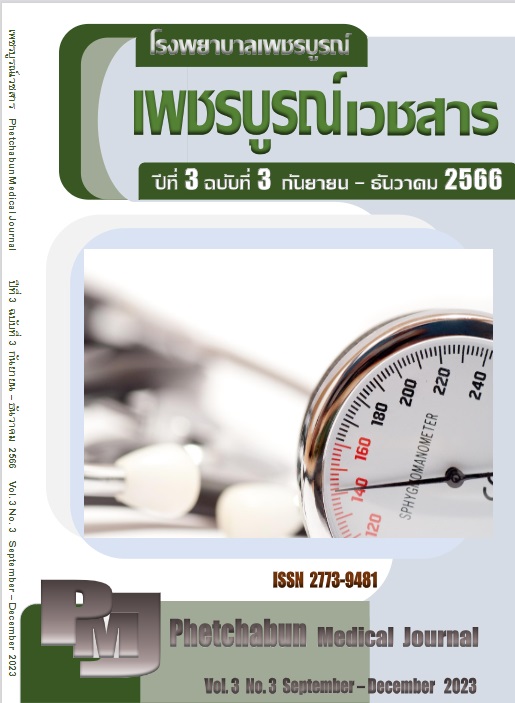Efficiency of emergency patients triage at Lomsak hospital
Keywords:
Triage system, efficiency of triage, emergency departmentAbstract
Patient triage is the process of determining the urgency of the critical symptoms that convey patients to the hospital for appropriate priority medical care. This descriptive prospective study aimed to evaluate the effectiveness of the emergency patient triage at Lomsak hospital using the Lomsak Emergency Severity Index (LESI). The sample consisted of medical records of emergency patients treated at the emergency department of Lomsak hospital, Phetchabun province. A systematic random sampling of 334 records that met the criteria was conducted between April and June 2023. The research tools included data recording forms and the Lomsak Emergency Severity Index (LESI), with a content validity index of 0.89. Data were analyzed using frequency and percentage statistics.
The study found that a total of 334 patients were included in the patient triage process. The accuracy of emergency patient triage was 82.9%, with an incorrect triage rate of 17.1%. Incorrect triage included both over-triage and under-triage at rates of 8.7% and 8.4% respectively. The most common under-triage was LESI 3 being classified as LESI 4, and the most common over-triage was LESI 4 being classified as LESI 3. The period between 16:01 and 24:00 had the highest rate of incorrect emergency patient triage. These findings can be used as a guideline for improving nursing competency in emergency triaging patients, and as foundational information for risk management, quality assurance, and continuous quality improvement of the emergency patient triage system.

Downloads
Published
How to Cite
Issue
Section
License

This work is licensed under a Creative Commons Attribution-NonCommercial-NoDerivatives 4.0 International License.


